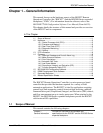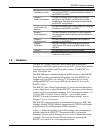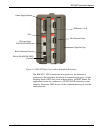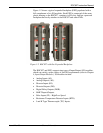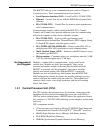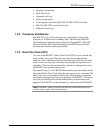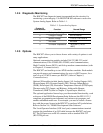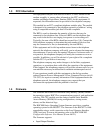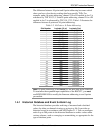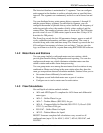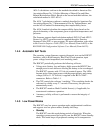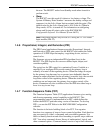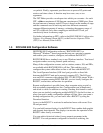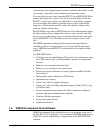
ROC827 Instruction Manual
Issued Mar-06 General Information 1-9
Historical Database.
Event and Alarm Log Databases.
Applications (PID, AGA, FST, and such).
Measurement Station Support.
Determining Task Execution.
Real-Time Clock.
Establishing and Managing Communications.
Self-Test Capability.
The firmware makes extensive use of configuration parameters, which you
configure using ROCLINK 800 software.
RTOS
The ROC800-Series firmware uses a pre-emptive, multi-tasking,
message-based Real-Time Operating System (RTOS) with hardware-
supported memory protection. Tasks are assigned priorities and, at any
given time, the operating system determines which task will run. For
instance, if a lower priority task is executing and a higher priority task
needs to run, the operating system suspends the lower priority task,
allows the higher priority task to run to completion, then resumes the
lower priority task’s execution. This is more efficient than a “time
sliced” architecture type.
TLP
The ROC827 reads data from and writes data to data structures called
“points.” A “point” is a ROC Plus Protocol term for a grouping of
individual parameters (such as information about an I/O channel) or
some other function (such as a flow calculation). Points are defined by
a collection of parameters and have a numerical designation that
defines the type of point (for example, point type 101 refers to a
Discrete Input and point type 103 refers to an Analog Input).
The logical number indicates the physical location for the I/O or the
logical instance for non-I/O points within the ROC827. Parameters are
individual pieces of data that relate to the point type. For instance, the raw
A/D value and the low scaling value are parameters associated with the
Analog Input point type, 103. The point type attributes define the database
point to be one of the possible types of points available to the system.
Together, these three components—the type (T), the logical (L), and the
parameters (P)—can be used to identify specific pieces of data that reside
in a ROC827’s data base. Collectively, this three-component address is
often called a “TLP.”
I/O Database
The Input/Output database contains the input and output points the
operating system firmware supports, including the System Analog
Inputs, Multi-Variable Sensor (MVS) inputs, and Input/Output (I/O)
modules. The firmware automatically determines the point type and
point number location of each installed I/O module. It then assigns
each input and output to a point in the database and includes user-
defined configuration parameters for assigning values, statuses, or
identifiers. The firmware scans each input, placing the values into the



